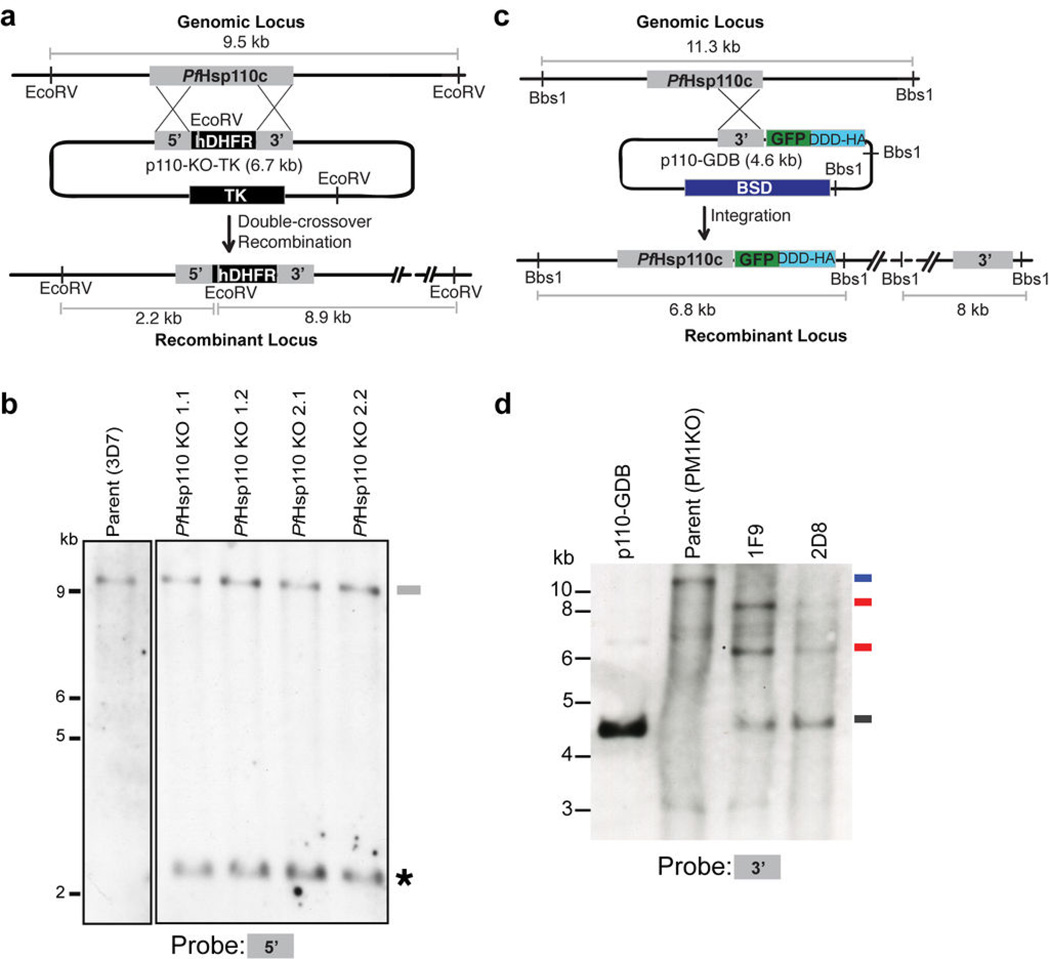Figure 2.
Knockout of PfHsp110c results in gene duplication. (a) Scheme showing the strategy utilized to knock out the PfHsp110c gene via double crossover homologous recombination. Plasmid (p110-KO-TK) containing a positive drug selection marker, human dihydrofolate reductase (hDHFR) and a negative drug selection marker, thymidine kinase (TK) was transfected into the parent strain, 3D7. EcoRV restriction sites used to detect integration along with the expected sizes are indicated. (b) Southern blot of genomic DNA digested with EcoRV and probed with the 5’ region of the PfHsp110c gene utilized for homologous recombination. The bands expected for double crossover integration of the 5’ homologous region were seen in all clones (*). The band expected for the undisrupted PfHsp110c gene in the parental line, 3D7, was also seen in all clones (—). (c) Scheme showing the strategy utilized to fuse the RFA-tag to the 3’ end of the PfHsp110c gene via single crossover homologous recombination. Plasmid (p110-GDB) containing the blasticidin (BSD) resistance cassette, for positive drug selection, was transfected into the parental strain, PM1KO. BbsI restriction sites along with the probe used to detect integration and the expected sizes are indicated. (d) Southern blots of genomic and plasmid DNA digested with BbsI. Bands expected from a single crossover integration of the RFA-tag into the 3’ end of the PfHsp110c gene were observed in both clones, 1F9 and 2D8, isolated from the two independent transfections ( ). The band expected for the digested plasmid was also seen in both clones (
). The band expected for the digested plasmid was also seen in both clones ( ), suggesting that a plasmid concatamer integrated into the gene, a common occurrence in P. falciparum. A single band was observed for the parental strain (PM1KO,
), suggesting that a plasmid concatamer integrated into the gene, a common occurrence in P. falciparum. A single band was observed for the parental strain (PM1KO,  ) that was absent in the integrant clones.
) that was absent in the integrant clones.

